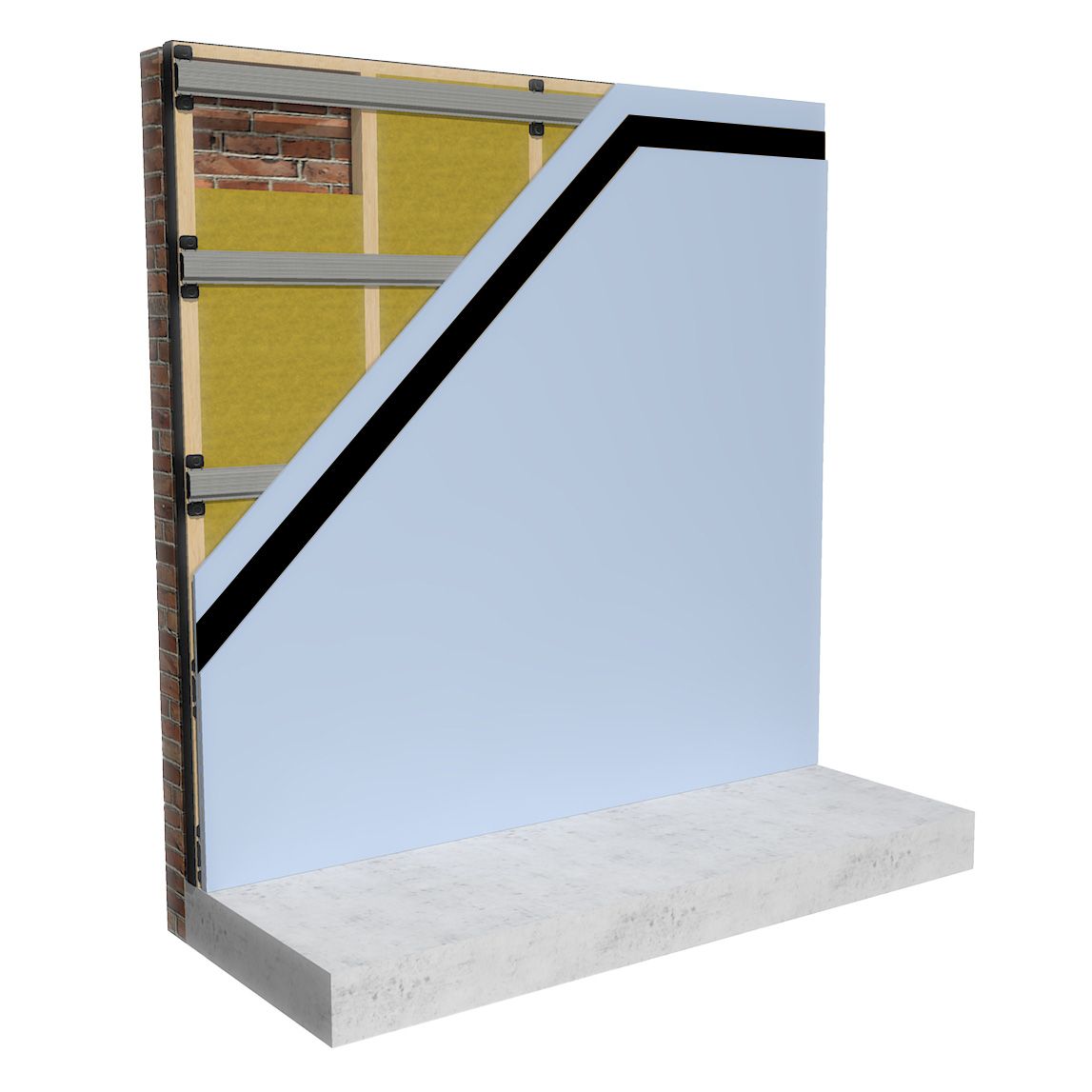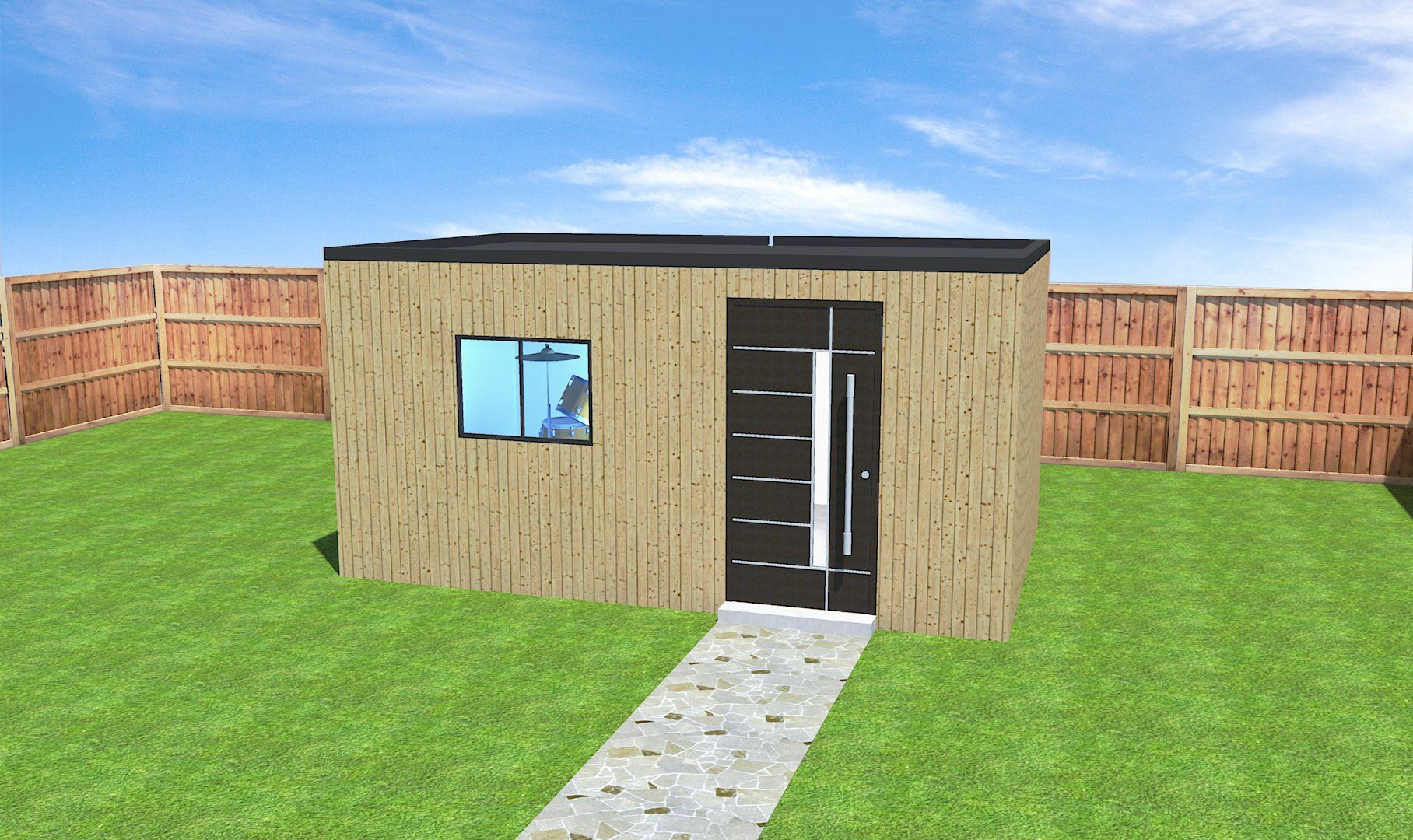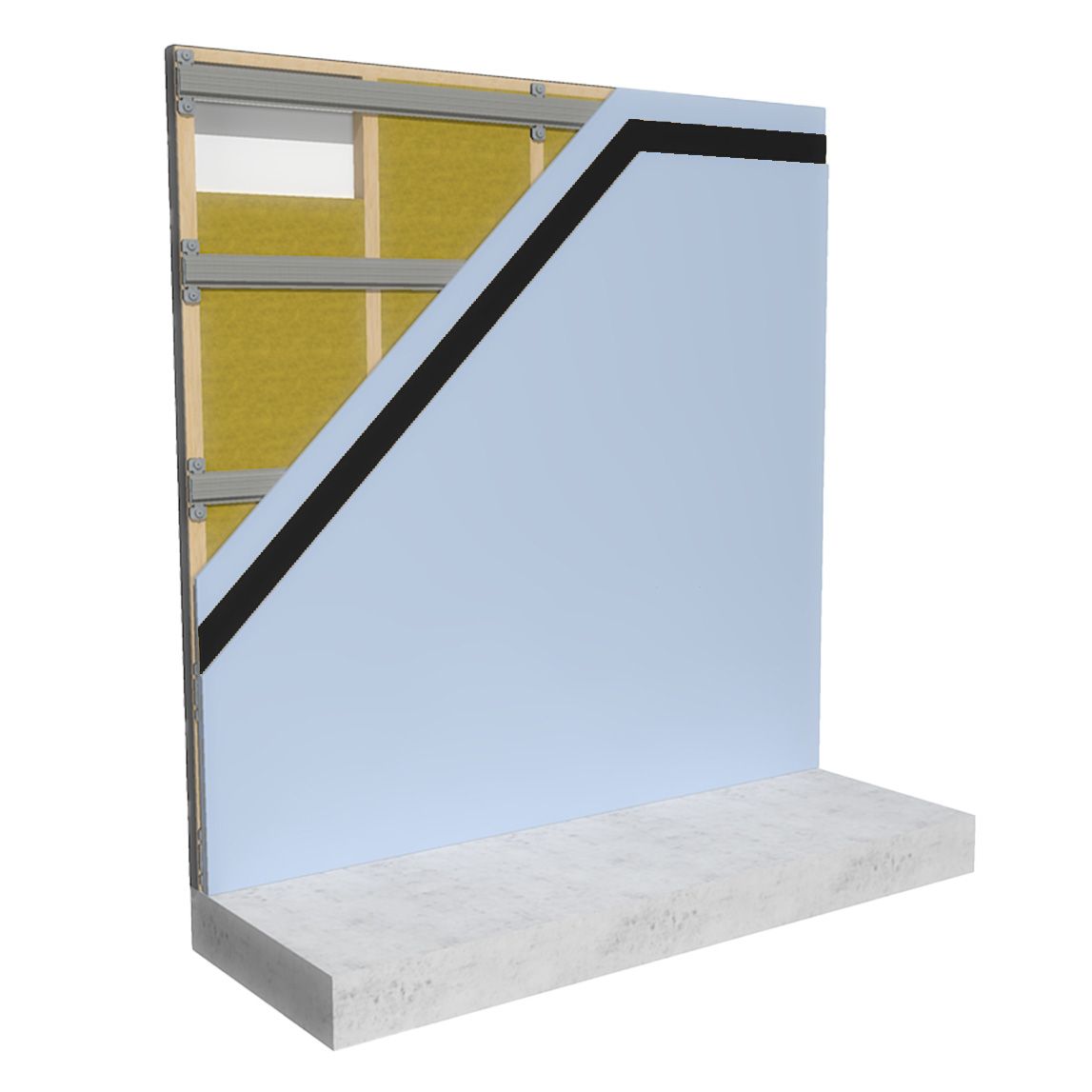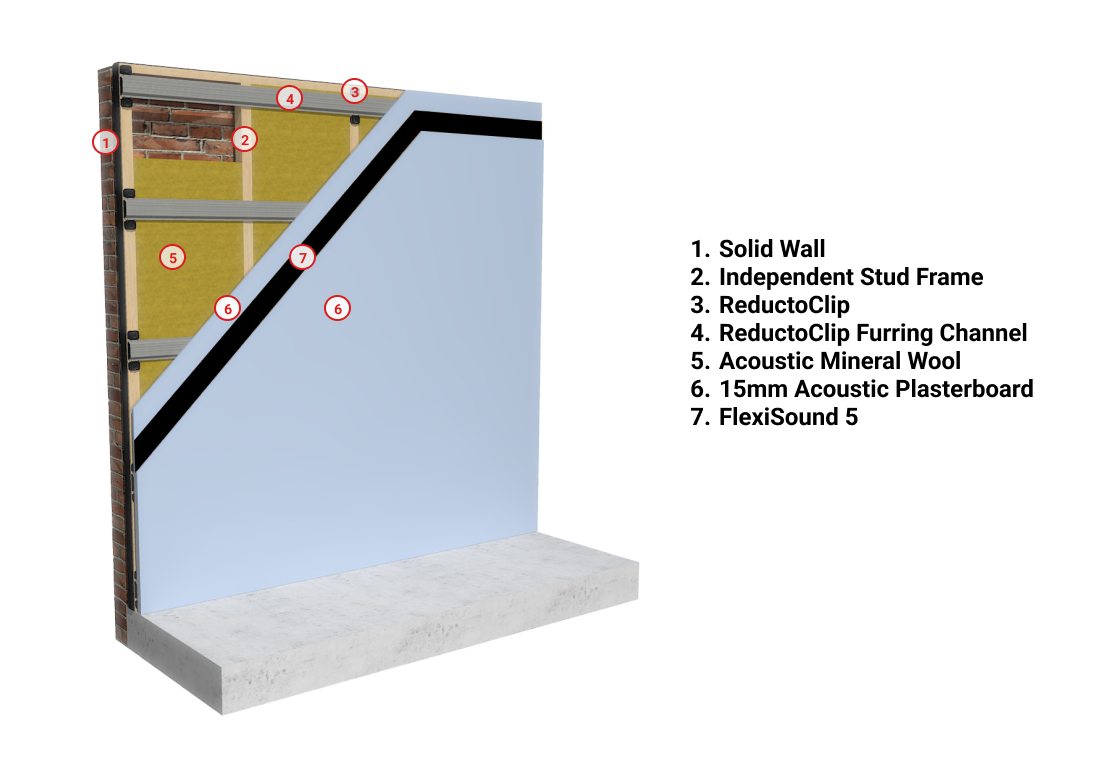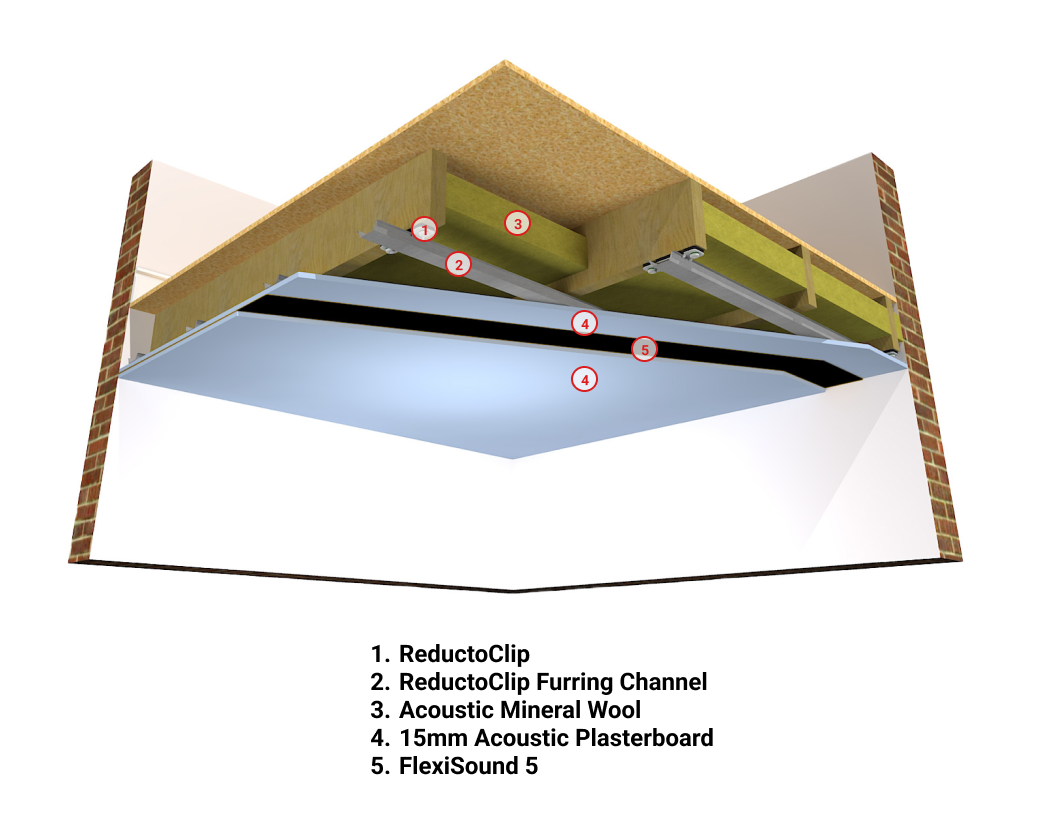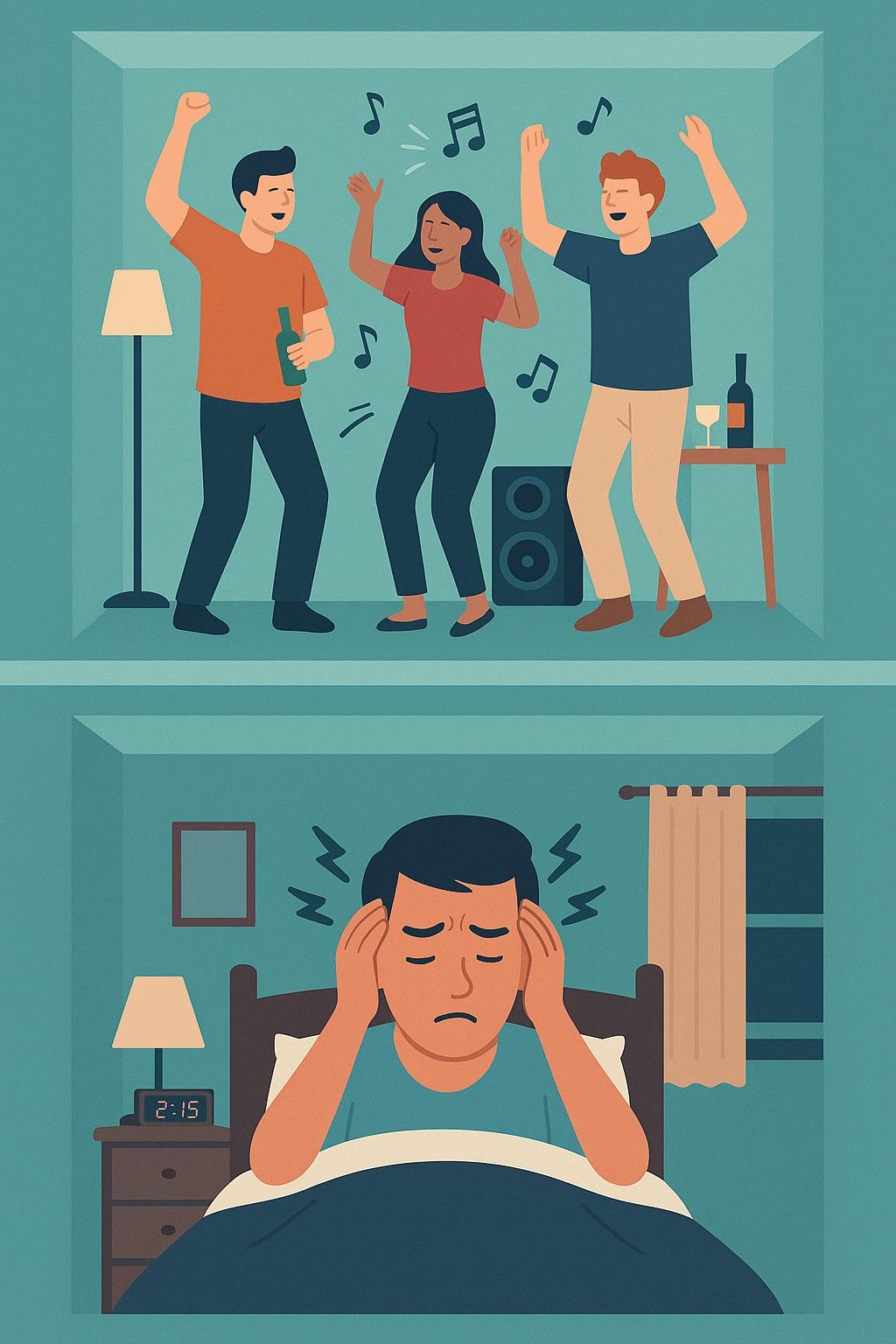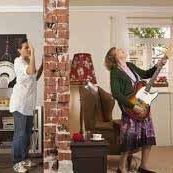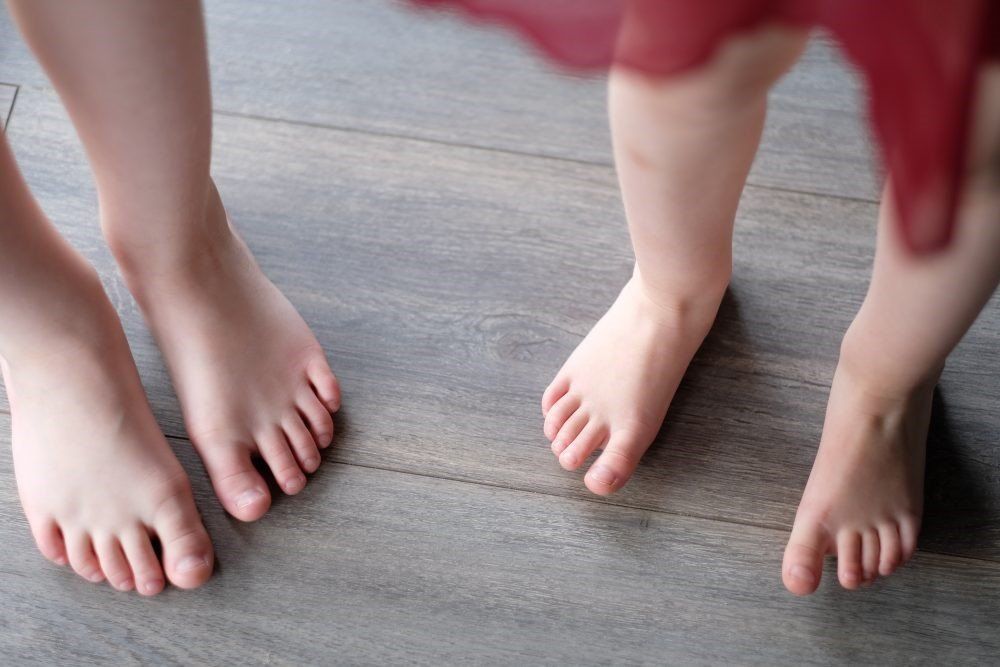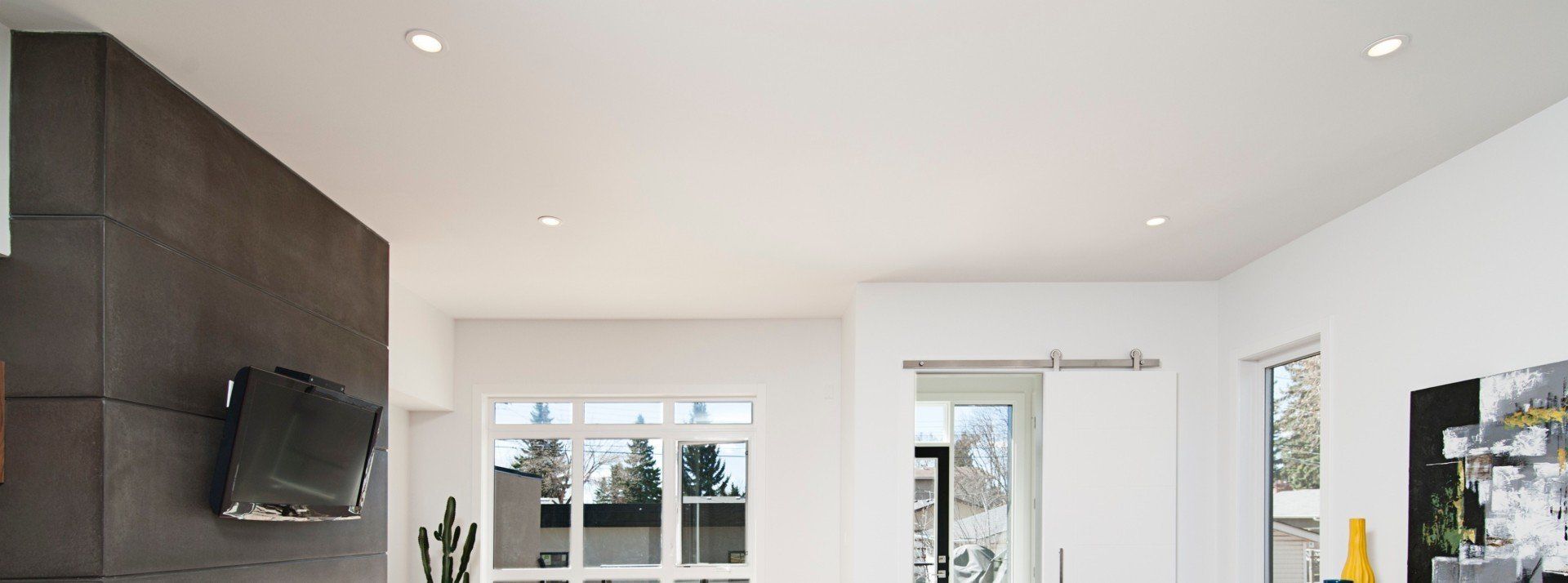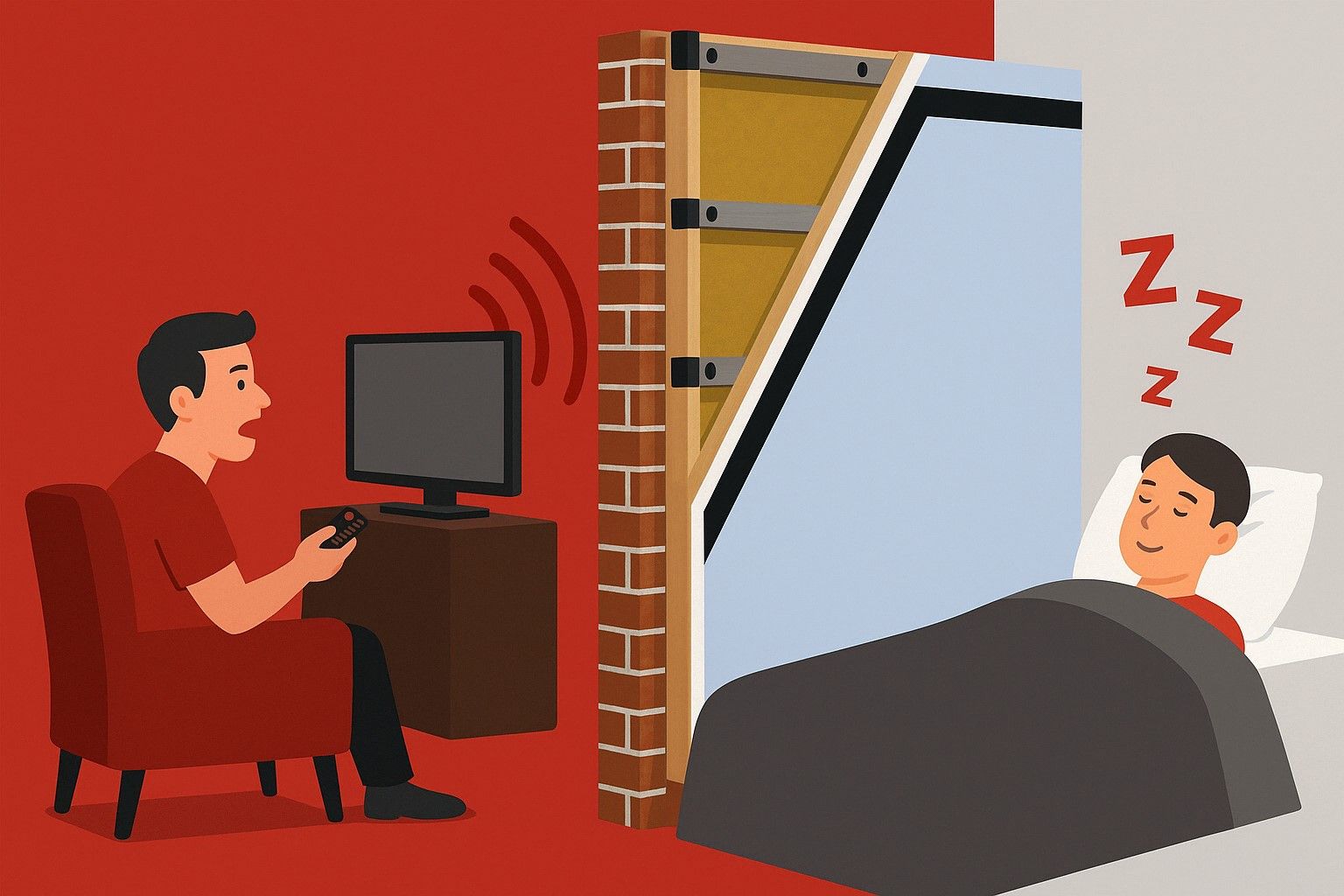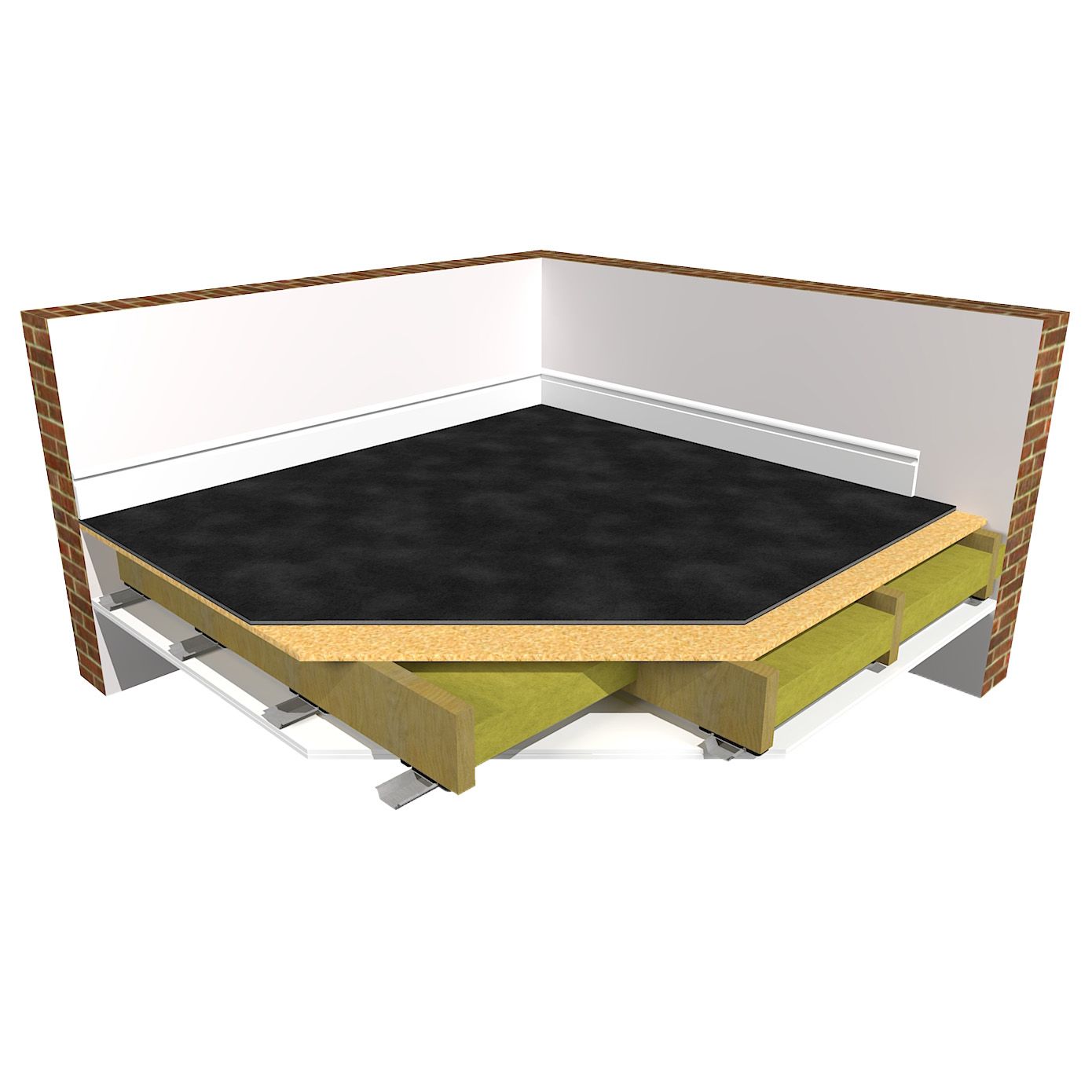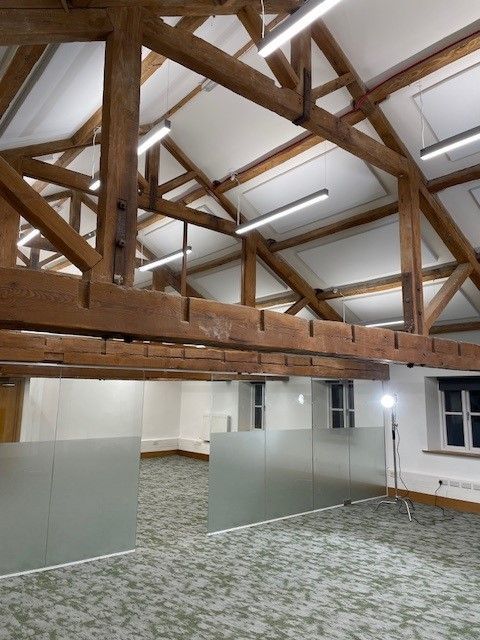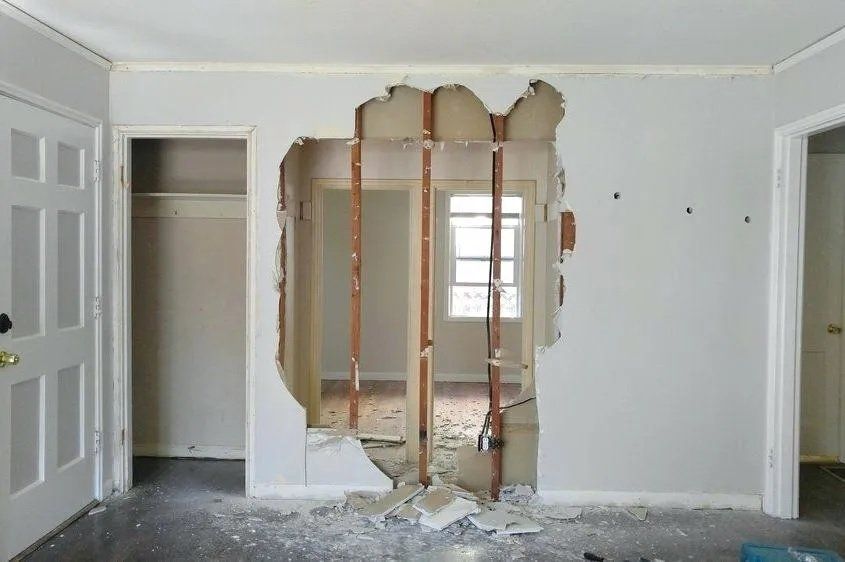Soundproofing A Garden Studio Room
ReductoClip System Installed Direct To Timber Studs - With mineral wool between studs, two layers of 15mm acoustic plasterboard and Acoustic membrane FlexiSound 5
ReductoClip System for solid walls, Installed with an independent stud frame 10mm away form the existing wall - With mineral wool between studs, two 15mm acoustic plasterboards and an acoustic membrane FlexiSound 5
We get many enquiries from musicians wanting to either build a music studio in their garden, or to convert an existing out building, garage or shed into a music studio. So we thought we would address this in more detail in this blog.
First off, just to mention, there is a lot of mis information on the internet about soundproofing and it is very easy to get confused by contradicting opinions or to be led down the wrong path (excuse the garden pun), by incorrect information. I will try to address some of these things and explain the real science behind soundproofing, so please bear with me.
The Fundamental Physics - Very Important!
There are three important things to address when soundproofing for high decibel, potentially amplified music levels.
- 1. Airborne Sound (voices, music etc) is only blocked by mass. To block airborne sound, the structure of the building needs to contain a high level of mass. Mass is a complex thing to get into, but at the simplest level, the heavier and more dense a material is, the more mass it will have. i.e concrete has more mass than wood.
- 2. When sound hits a surface it becomes a vibration energy which can transfer through solid materials and surfaces very easily. Bass and kick drums will also create a lot of vibration energy. For a high standard of soundproofing, we need to absorb or decouple this vibration to stop it from transferring into the structure of the building. To do this we use the
"Room Within A Room" technique. There will be more on this later.
- 3. Soundproofing is like waterproofing - To contain the sound within the studio, you will need to soundproof all the walls, ceiling and floor. All weaknesses such as windows, doors and air vents need to be considered, and any air gaps need to be sealed, as sound will always find the weak point and still get through.
What Should I Build My Studio Out Of?
Ideally you want to start by building your structure with high mass materials. Using two layers of high density breeze block with a cavity in between structure is a ideal perfect world solution and will perform far better than a lighter wooden construction. The structure will then block a lot of sound naturally before even adding any soundproofing to it. Then after installing a high performing soundproofing system such as our ReductoClip system on the inside, you will get a very high level of sound reduction that should block even high levels of live music.
Can I Use My Wooden Garden Shed?
Unfortunately wooden constructions are the hardest to soundproof. As you are starting with a structure that has very little mass and natural ability to block sound. To soundproof a timber construction you will need to install a high performing soundproofing system such as our ReductoClip system on the inside. This will upgrade a standard timber construction to achieve a good reduction in noise levels. However don't expect to achieve a 100% noise reduction, think more 75%.
The other issue with garden sheds is the size, as any soundproofing system will reduce the internal size of the construction by up to 120mm per wall.
How Do I Soundproof The Inside?
For live music levels of noise we need to build a "
room within a room ", with the inner room decoupled or isolated from the outer room. We do this by using a system such as our
ReductoClip
or resilient bars. These are fixed to the solid wall and ceiling joists, we can then build new wall and ceiling layers (creating the inner room), by fixing these layers onto the ReductoClip rather than being fixed directly to the wall. The ReductoClips act like shock absorbers, so when sound hits the new wall layers and turns into a vibration energy, the
ReductoClip absorb this energy stopping it from transferring into the structure.
We then need to add high mass materials such as two layers of 15mm acoustic grade plasterboard which has a higher in mass than standard plasterboard. You can also improve the performance by adding different materials (different types of mass block different sound frequencies better than others). These include
FlexiSound 5 and
Mass Loaded Vinyl .
We can improve this system further by installing the ReductoClips
on an insulated timber frame in front of the solid wall (as seen above). This will isolate the system even further by having less contact with the structure. The absorbing quality of acoustic mineral wool within the frame will also improve the performance of the system.
Why the ReductoClip™ System Outperforms other Clip Systems
How to soundproof a wall with the ReductoClip™ system
The same system is used on the ceiling as below.
FAQ's
Can't I Just Stick Foam Panels On The Wall?
This is one of the biggest misconceptions in soundproofing. The foam panels you seen in recording studios are designed for acoustic treatment NOT soundproofing. They have NO soundproofing properties. They are designed to reduce the reverberation within a space to "clean" the acoustics and get a better, cleaner, dryer sound within the room. They do not block the sound from leaving the room.
What About The Floor?
If it is a garden studio, you will have nobody below you to worry about and your structure will probably be on a concrete base. So you shouldn't need to block any sound from travelling below unless you have a raised structure with a void below building. (if the floor need soundproofing you can use our SoundMat 3 and mineral wool in any void areas) What you do need to do is absorb the vibration from drums and bass. You can use a mat that is designed to absorb vibration, such as our ImpactoMat 5mm.
What Do I Do With Windows And Doors?
These are the biggest weak spots. Ideally, if you can get away with not having any windows, this will give you the best performance. If you need natural light then use triple glazed or specialist acoustic glazing. This needs to be well fitted with no gaps between the frame and the wall.
Regarding Doors, again you need high mass material, so a heavy, dense fire door, or even a double door system would be best. Or you can add mass to your existing door by adding a layer of mass loaded vinyl to the door. Again making sure there are no air gaps between the door and frame by adding a good seal or draught excluding material. You can also purchase custom made acoustic doors which are very high performing, but these can be expensive.
Find out more about soundproofing doors here - https://www.soundproofingstore.co.uk/how-to-soundproof-a-door
What do I do for Ventilation if the room is airtight?
For ventilation we suggest using a high quality acoustic vent system.
Garage Conversion By YouTuber Levi Clay
I hope this has covered most questions, as always if you want the best advice, speak to a professional. We are happy to talk you though any problems or answer any questions.
You can call us Monday to Friday, Nine to Five on 01423 206 208 or contact us using the form below.
Share
"We don’t expect you to become an overnight expert in soundproofing, that’s what we’re here for."
